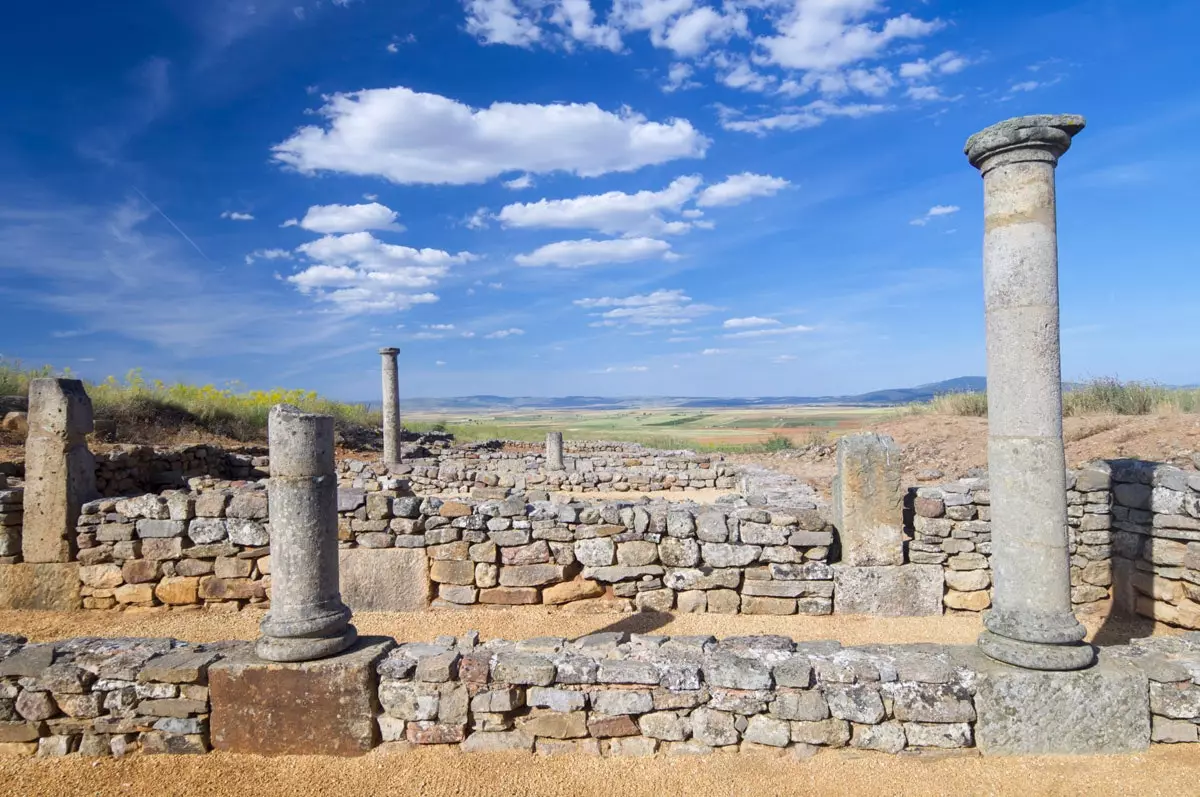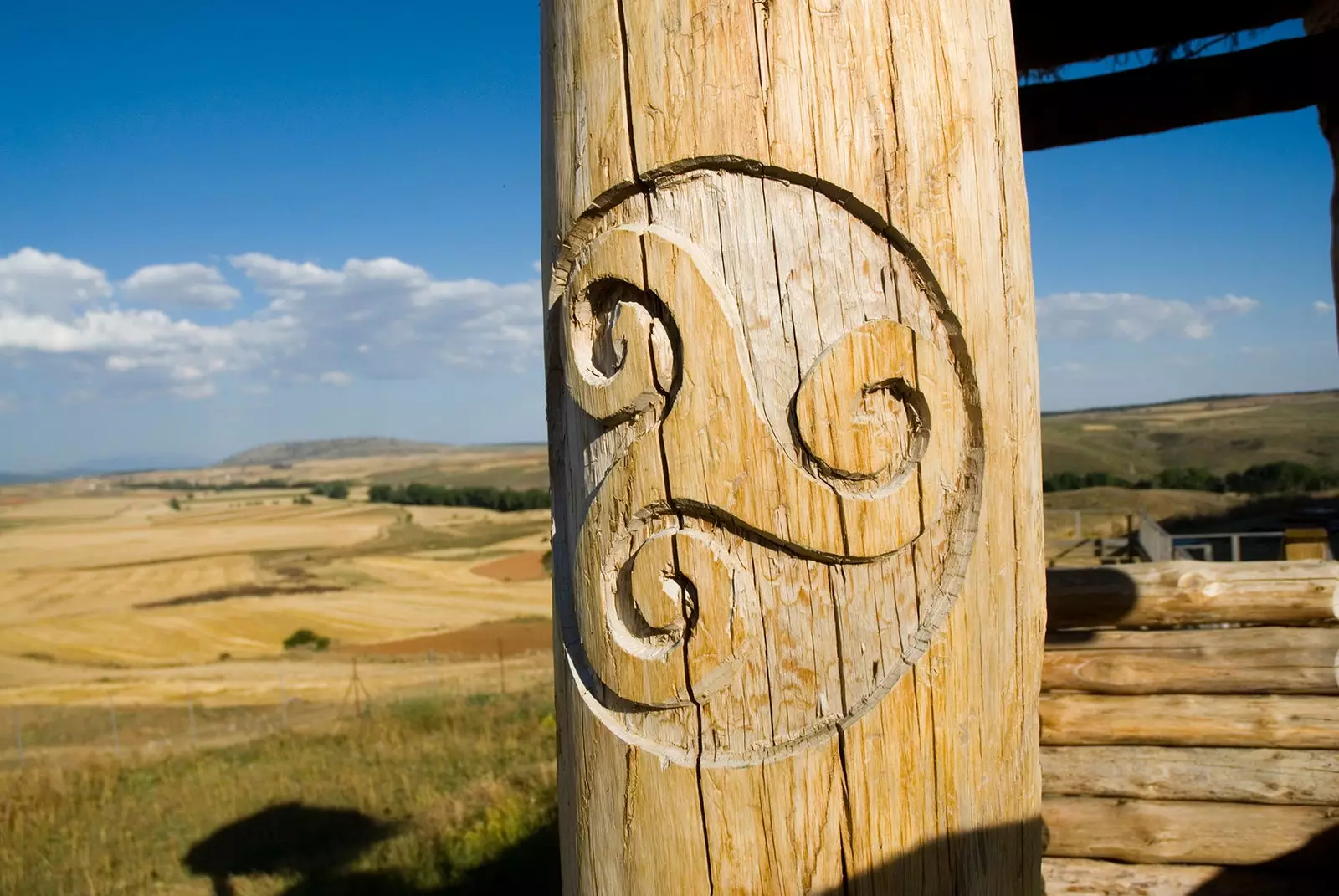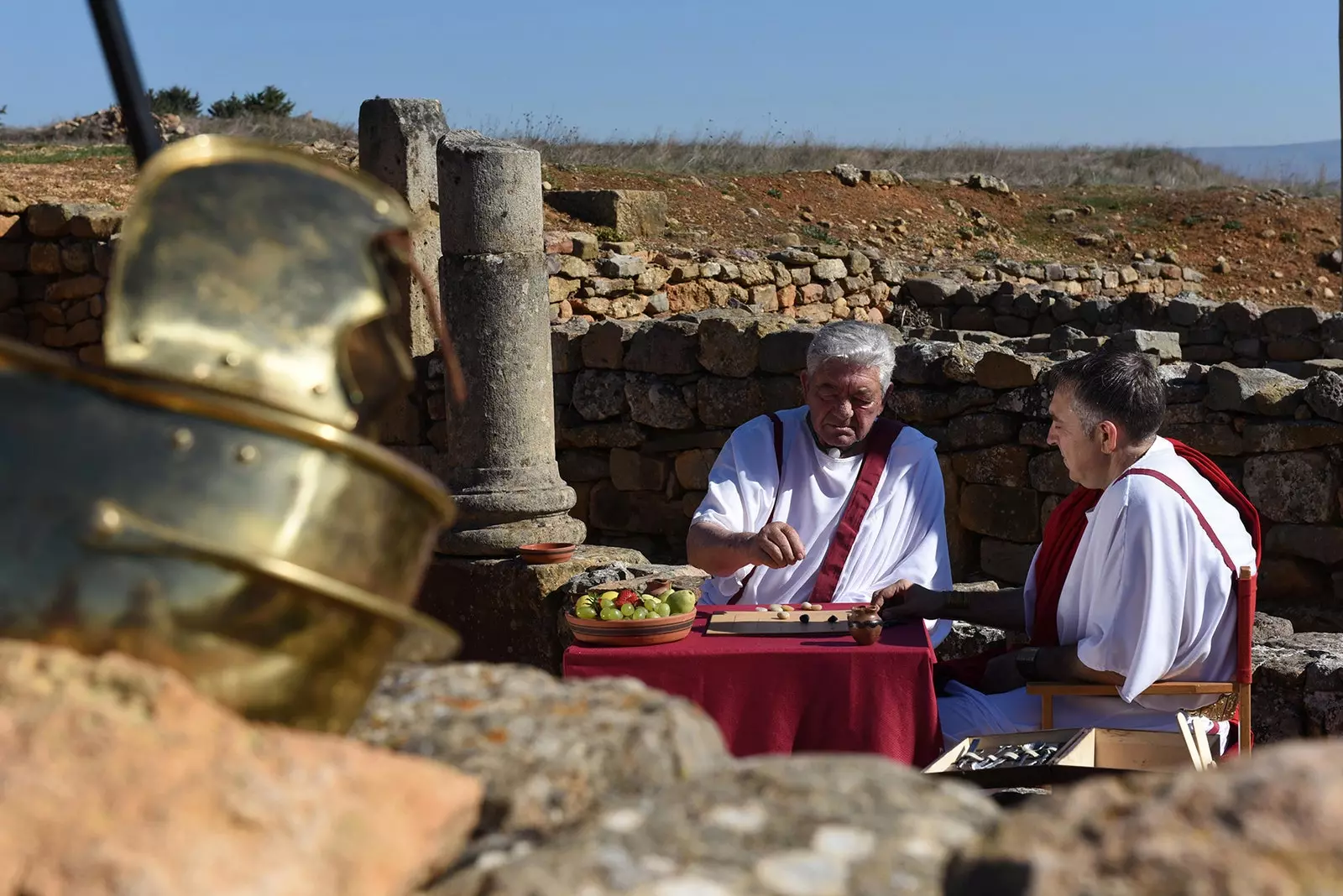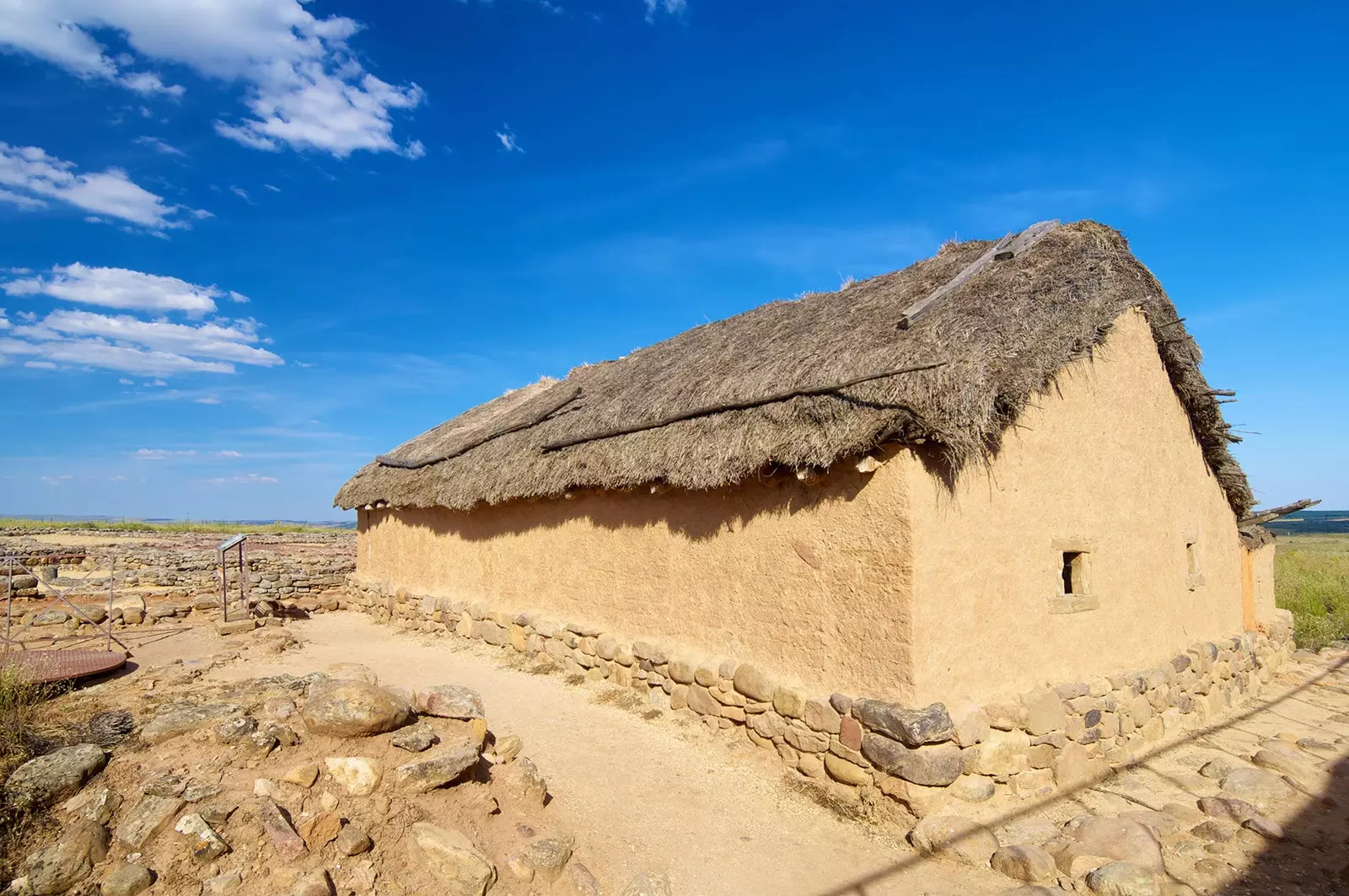
Why Numancia deserves to be recognized by UNESCO
As much as, to date, Numancia is not on the UNESCO tentative list, few places in Spain have more reasons to be a World Heritage Site That this. And even more so if we appreciate the efforts that the Foro Soria 21 has been making in recent years in order for it to be recognized at regional, national and international level the importance of this site both in the history of Spain and in that of the West.
In the eyes of 'instagrammers', the vast hill of La Muela may not have that photogenic quality that often overshadows the real value of places. However, it is a witness and remains of one of the most amazing war stories of antiquity. A fact that UNESCO should not overlook, since it created this title in order to preserve and claim those assets of unique cultural importance. And as if this were not enough, here they go another ten indisputable arguments for Numancia to enter the VIP list of monuments.
1. CELTIBERIAN PRIDE
Spain suffers from the endemic evil of hardly recognizing its own, hence in the mind of the average Spaniard there is a gap between the paintings of Altamira and the invasion of the peoples of the Mediterranean. And yet, there were peoples and cultures like the Celtiberian that had successfully settled in the Meseta, making their cities evolve ( Numancia came to have a constant population of 2000 inhabitants ) and generating a tribal system that settled in the Peninsula for 9 centuries. And, although its archaeological remains are not the best preserved, the mere fact of being one of the great cities of this era It is already a milestone to be taken into account.
two. IT IS THE COUNTRY MASADA
Just as the Jewish people venerate the last fortress to surrender to the all-powerful Imperium as a symbol of resistance, authenticity and bravery, in Spain we should do the same with the forgotten and mestizo Celtiberian people. And the similarities are amazing. Both perished on top of a hill, at the hands of the same colonizing enemy and with a very similar end (which we will reveal later). The only difference? That Masada has indeed become a symbol and Numancia barely belongs to the imagination of those most passionate about history.
3. FROM CARTHAGE TO THE DUERO
The arrival of the Roman Empire marked the end of the Celtiberian era, but, however heralded his death, it was not a bed of roses for the invaders. Up to 20 years, between different outbursts and disputes, the confrontation between the Arevaci of Numancia and their allied tribes against the Romans lasted. The painful and humiliating defeats that the legions were suffering forced the Senate to call up Publius Cornelius Scipio Emiliano, grandson of the general who defeated Hannibal and brand new conqueror of the city of Carthage. A fact that shows that Numancia had gone from being an anecdote on the map to being a real headache.

Celtic triskele in the fields of Castilla
Four. DEAD BEFORE DEFEATED
The great Roman general decided to suffocate Numancia, blocking it with up to 7 camps which were linked by a 3 meter high wooden fence. Even the passage of the Duero was controlled with a rake of sharp spikes. Hence, the brave Numantines chose to set fire to the city and, many of them, commit suicide before seeing their bastion fall. A worthy ending that fueled his legend. In practice, Publius Cornelius Scipio Aemilianus only gained prestige and lost money since he had to pay the Roman soldiers out of his own pocket for not finding anything of value after looting.
5. SAVE THE FALLEN!
Partly due to this unprofitable ending and partly due to the tremendous opposition of the Celtiberians, Rome turned the victory of its hosts into something epic, praising the enemy as if they were superhuman beings. The ecstasy came with Scipio's ensuing parade through the streets of Rome boasting of his victory and with 50 Numantine survivors as witnesses of everything. fast them main roman chroniclers of the time they used epithets and hyperboles with which to do justice to their opponent and elevate his ferocity to myth.

Recreation in Numancia
6. TROY ON THE OUTSKIRTS OF SORIA
Roman Numancia was built and repopulated with, paradoxically, Celtiberians related to Emperor Augustus. But it was no longer the same and, Little by little, the great city and its remains disappeared. So much so that even in the middle of the 19th century it was thought that the original Numancia was located in Zamora. However, Eduardo Saavedra found in 1860 the first signs of ruins that were later confirmed and revealed as the legendary Numancia.
7. THE GERM OF EUROPE
The find attracted the best archaeologists at a time when the old continent was plagued by a fever for the Ancient. Hence the first major excavation of both Numancia and the Roman camps it was made by the legendary german specialist Adolf Schulten funded by money from Kaiser Wilhelm II back in 1905. Quite a demonstration of cooperation between countries that began with the immediate recognition of Rome, continued with the investigations sponsored by the German Empire and, at present, is finished off with the adherence of universities from all over the continent such as Hamburg, Pécs or Bristol to this increasingly firm candidacy.
8. NOT JUST FOR INDIANA JONES
Nowadays, visiting the ruins is not an exercise in imagination nor is it for experts. Several models and replicas They show what life was like for the unknown Celtiberians, the siege of the Romans and life after the conquest. Through a 12 point run The main archaeological and anthropological findings are deepened in an understandable and universal way. Also, the commemoration of the 2150th anniversary of its fall has inspired new ways of learning about the sites, whether it's with bike routes through the different camps, with geocaching challenges or contemplating one of the popular recreations of its most famous episodes.
Also, This weekend there will be a Solemn Military Parade chaired by the Army Chief of Staff Mr. Francisco Javier Varela Salas, in a tribute to which countries such as Portugal, Germany and Italy that reinforces the internationality of the event and of the commemoration.

Celtic house in Numancia
9. FROM THE DICTIONARY TO THE LITTLE BIRDS
In addition to its historical and tourist relevance, Numancia has a third fundamental leg: the cultural one. The manifestations are remarkable and they were not only in the praise verses with which the Romans flattered them. The first evidence is linguistic, with the toponym 'numantino' converted into an adjective that the RAE defines in this way: “That tenaciously resists to the limit, often in precarious conditions. That is to say, Spartans but to the Spanish.
Beyond the dictionary, the presence in art and tradition is full of curiosities. For example, Cervantes dedicated a tragedy to him, 'The Siege of Numancia', while the fever for this ruin unleashed with excavations at the beginning of the 20th century inspired the name of a city in the Philippines as well as several ships and army units. The epic passed, in 1945, from the military to the football, with the foundation of Numancia de Soria, the city's main team that took its name and spirit (winter matches at Los Pajaritos are only for the brave) from the old Celtiberian settlement.
10. IT IS UNCLASSIFIABLE
Although it sounds like a challenge, the difficult task of defining what Numancia is and what is its importance in the history of the West within the parameters of UNESCO it's more of a compliment. As has become clear, it is not just a site. It is the memory of a resistance that has risen to legend and that has inspired politicians, archaeologists and artists of different times. A place whose magnetism transcends history and that means that, for UNESCO, it has to be something more than a cultural or intangible asset. Maybe it's time to create a new tag where both are merged or recognize that a place can also become a memory and reconciliation tool.
